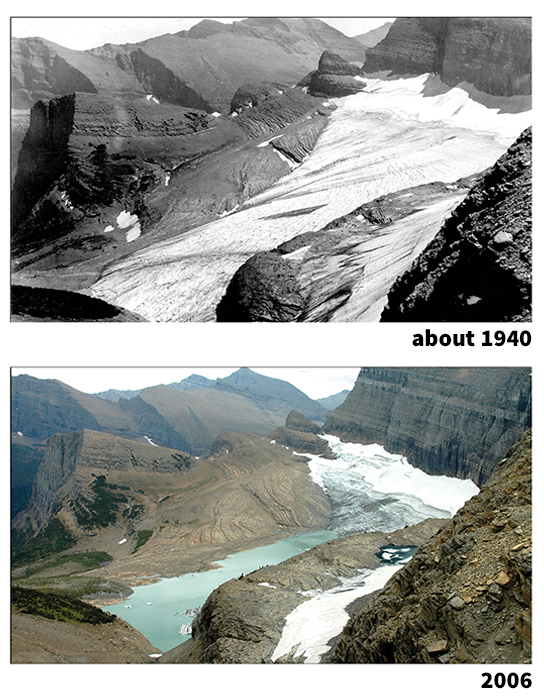Current Events Lesson Plan: May 18-25, 2017
Current Event: Glacier Bay Losing its Glaciers
Glacier National Park in northwestern Montana may soon be without any of its trademark glaciers. Many of the park’s largest glaciers have lost much of their former size in the last 50 years. Glacier National Park had about 150 glaciers in 1850. Over the past 50 years, scientists used digital maps from aerial photography and satellites to measure the glaciers in late summer when seasonal snow has melted to reveal the boundaries of the glacial ice. Since the first survey in 1966, the glaciers have shrunk by an average of 39 percent. Today, the park has just 26 ice masses large enough to qualify as glaciers. Scientists blame this dramatic glacier melt on global warming, and they predict Glacier National Park will be without any glaciers at all by 2030. This is troubling news for the state of Montana, where more than 2 million tourists take in the scenic views at Glacier National Park each year. Experts worry that the glacier loss will also have serious damaging effects on the ecosystems of the park and surrounding Rocky Mountain habitats.

Click to view larger image
The retreat of a mountain glacier can provide visible evidence of global warming. These photographs show two late-summer views of Grinnell Glacier in Glacier National Park, Montana. In the photo taken around 1940, top, Upper Grinnell Lake had only begun to form at the glacier’s end. By 2006, bottom, melting ice had caused the lake to swell in size. Researchers predict that warming will melt all of the park’s glaciers by 2030. Credit: Glacier National Park Archives, top,U.S. Geological Survey, photograph by Karen Holtzer, bottom
Objective:
The National Park System consists of hundreds of areas in the United States that have been set aside for the benefit and enjoyment of the people. These areas, called parklands, are natural wonderlands, famous historic places, or sites for many kinds of outdoor recreation. They include national parks, monuments, battlefields, lakeshores, rivers, and historic buildings. The United States government established the first national park in the world, Yellowstone National Park, in 1872. The National Park System developed with the creation of additional parklands. Today, the District of Columbia and every state have at least one national parkland, and the system consists of about 410 areas and totals more than 84 million acres (34 million hectares). The Behind the Headlines news story and related World Book articles explore Glacier National Park and other national park system areas.
Words to know:
Discussion Topics:
1. Ask your students to name some famous national parks around the world. (Students might say Banff National Park, Death Valley National Park, Denali National Park, Grand Canyon National Park, Galapagos National Park, Great Barrier Reef Marine Park Authority, Great Smoky Mountains National Park, Iguaçu National Park, Jasper National Park, Kilimanjaro National Park, Komodo National Park, Kruger National Park, Serengeti National Park, Yellowstone National Park, Yosemite National Park.)
2. Ask your students to debate, “Global warming is the biggest threat that humans are facing right now.”
3. Ask your students to discuss, “If global warming is not reversed, how will our lives be different in the future?”
4. Ask your students to use World Book’s Timelines feature to make a timeline showing the history of the National Park System. (Students may wish to use World Book’s “National Park System” article and the articles of individual park system areas for help.)


